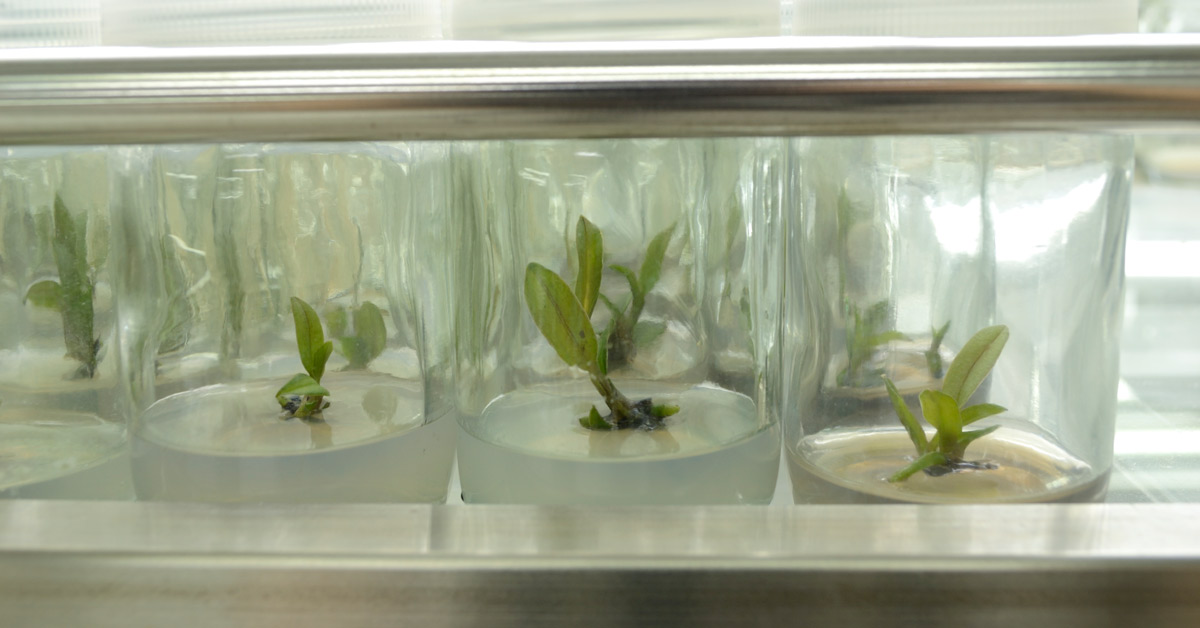
Null segregants are not GMOs, says NZ’s EPA (but they are)
New Zealand’s Environmental Protection Authority (EPA) has released its decision on “null segregants” (APP204173), defining them as “not genetically engineered organisms”. This followed the NZ government research institute Plant & Food applying to the EPA to determine if “null segregants” were considered to be genetically engineered (GE) organisms.[1] GE Free New Zealand is among those who are unhappy about this decision.
So what exactly are “null segregants”? GE Free New Zealand explains in their press release that they are genetically engineered (GE) plants that have been cross-bred to the point where the novel genetically engineered constructs, such as a foreign gene from another species (a transgene), have been “removed but the offspring still express the desired trait change.” For example, in the case of a genetically engineered plant that has been developed for early flowering, “a plant that does not show the transgene but inherits the early flowering trait through generational cross breeding is termed a ‘null segregant’.” (For a more technical description, see that given by the European Food Safety Authority (EFSA).[2])
How are null segregants viewed and regulated elsewhere?
The question of whether null segregants are regulated as GMO or non-GMO depends on the definition of a GMO in the relevant laws. Wherever we find the definition of a GMO as novel or “new combinations of heritable/genetic material” (or equivalent wording) created through genetic engineering, it can be argued that the null segregant is a GMO and falls under the GMO regulations. That includes the European Union (Directive 2001/18/EC) and all regulations based on the Cartagena Protocol on Biosafety of the United Nations Convention on Biological Diversity – which only the United States and three other UN member states have not ratified.
By contrast, the Academy of Science of South Africa defines a GMO as an organism that has a new piece of DNA inserted into it – a “transgenic event”. In this view, a null segregant is not a GMO because it has lost the insertion that makes it a GMO. The situation in Argentina is the same.
In GMWatch's view – one that is supported by the science underpinning genetic modification as well as, legally speaking, by the Cartagena Protocol on Biosafety – null segregants are new combinations of genetic material and may present new or increased risks. Therefore, they need to be regulated and the trigger for that regulation should be the use of genetic modification techniques in their development.
Criticism of the EPA’s decision
GE Free New Zealand believes that the EPA has “yet again misinterpreted New Zealand legislation”.
GE Free New Zealand also notes that although the null segregant is tested to confirm that it doesn’t have the detectable engineered trait, there is an assumption by developers that other genetic changes created by the genetic engineering process are of no relevance. However, these changes pose risks of harm to the organism and potentially to the health of consumers and the environment.
In addition, the speed of change could increase the risk of unforeseen adverse effects, which could be inherited.
An earlier application by Plant & Food to ERMA, now the EPA, for field testing five species of the onion family (allium) the project team considered that GM allium null segregants were indeed GM alliums.[3]
New Zealand’s Hazardous Substances and New Organisms Act (HSNO), which the EPA is bound by, defines genetically modified organisms as those that have been modified by in vitro techniques, or are inherited or otherwise derived from any other genes or genetic material that has been modified by in vitro techniques.[4] This wording would appear to classify null segregants as GMOs.
Certainly there are sound scientific reasons to regulate null segregants as GMOs. Prof Jack Heinemann et al (2022) published a paper in Frontiers in Genome Editing that concluded: “Gene technology, even when used to make null segregants, has characteristics that make regulation a reasonable option for mitigating potential harm. Those characteristics are that it allows people to create more harm faster, even if it creates benefits as well; the potential for harm increases with increased use of the technique, but safety does not; and regulations can control harm scaling.”[5]
Further, in 2013 New Zealand’s Sustainability Council appealed to the High Court to contest an EPA decision that certain gene editing techniques (Zinc Finger Nucleases (ZFN-1) and transcription activator-like effector nucleases (TALENS) were exempt from the GMO regulation as they had “similarities” to non-GM breeding.
The High Court found that the EPA committee that classified gene-edited plants as equivalent to products of random chemical mutagenesis (which are not regulated) made an incorrect legal interpretation and that gene-editing techniques fall within the scope of the GMO regulation.[6]
GE Free New Zealand said, “It is of concern that Plant & Food, which have worked with the EPA and been found in serious breach of controls in previous field trials, are pretending to not know the GE legislation and want to avoid regulation.
“The EPA decision yet again goes against New Zealand law. It is time that the EPA does not base its decisions on disregarding the law and bowing to overseas bio-corporate pressure that turns a blind eye to inherent risks of unintended changes from genetic engineering."
References
[1] https://www.epa.govt.nz/industry-areas/new-organisms/null-segregants/
https://www.epa.govt.nz/database-search/hsno-application-register/view/APP20417
[2] The European Food Safety Authority (EFSA) describes null segregants this way: "Plants that are negative segregants lack the transgenic event and can be produced, for example, by self-fertilisation of hemizygous GM plants, or from crosses between hemizygous GM plants and non-GM plants". EFSA stops short of predetermining that the null segregant is a non-GMO.
[3] https://www.epa.govt.nz/assets/FileAPI/hsno-ar/GMF06002/032b3e9af0/GMF06002-GMF06002-EandR.pdf
[4] https://www.legislation.govt.nz/act/public/1996/0030/latest/DLM381222.html
https://www.mpi.govt.nz/import/plants-flowers-seeds-plant-growing-products/seeds-for-sowing/genetically-modified-seeds-and-nursery-stock/
[5] https://www.ncbi.nlm.nih.gov/pmc/articles/PMC9871356/
[6] https://www.ncbi.nlm.nih.gov/pmc/articles/PMC5033166/
Main source: GE Free New Zealand










